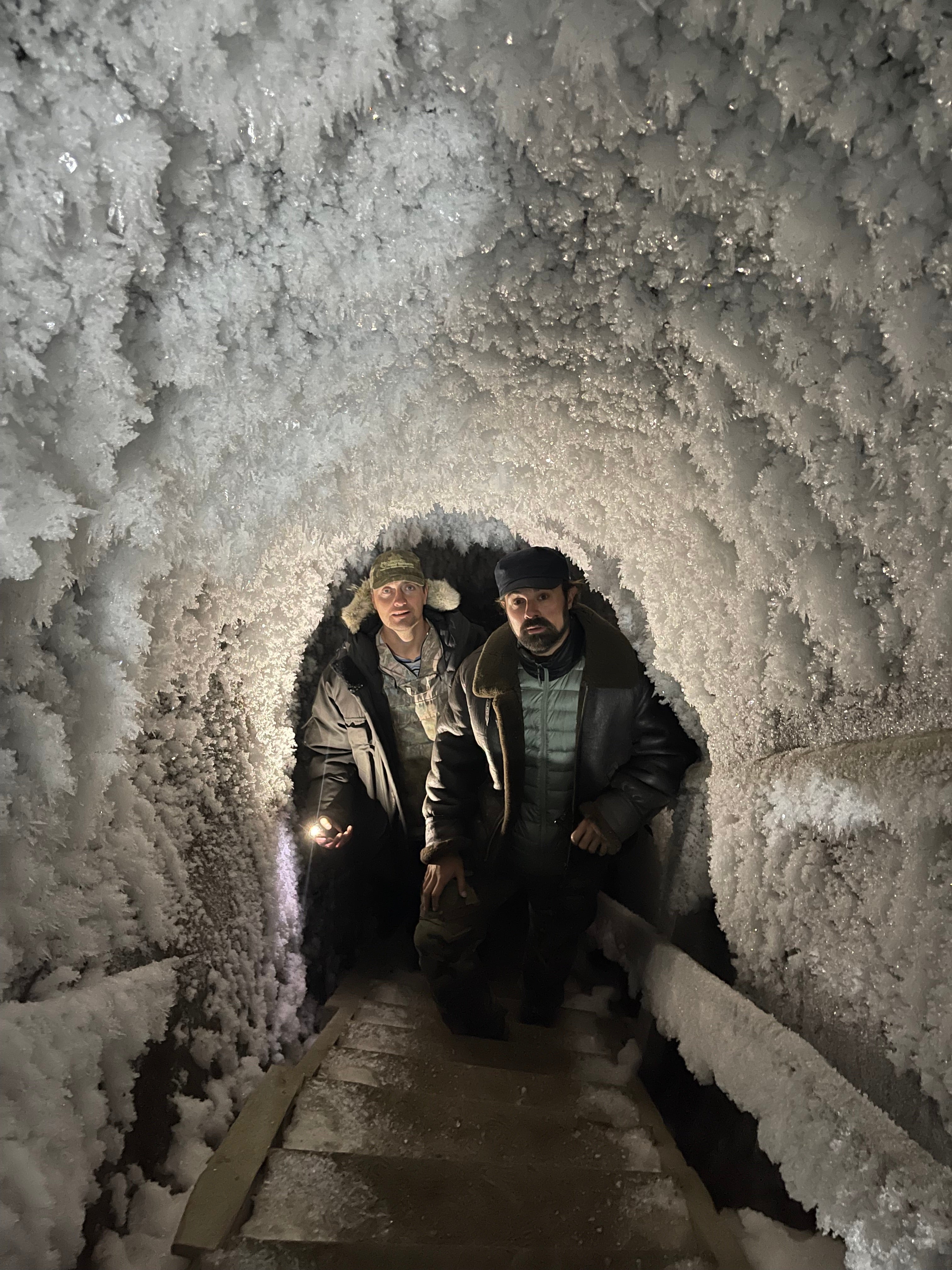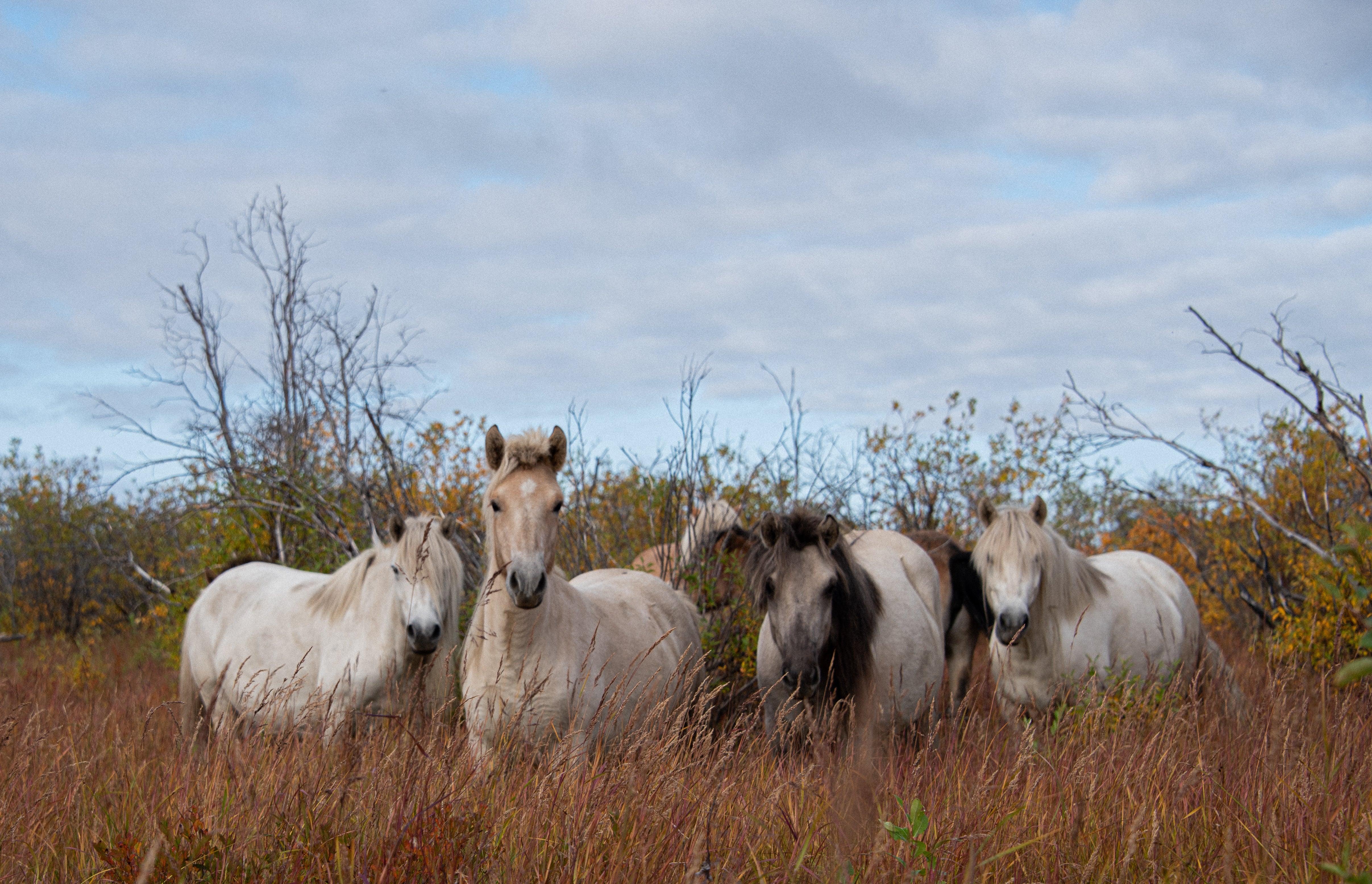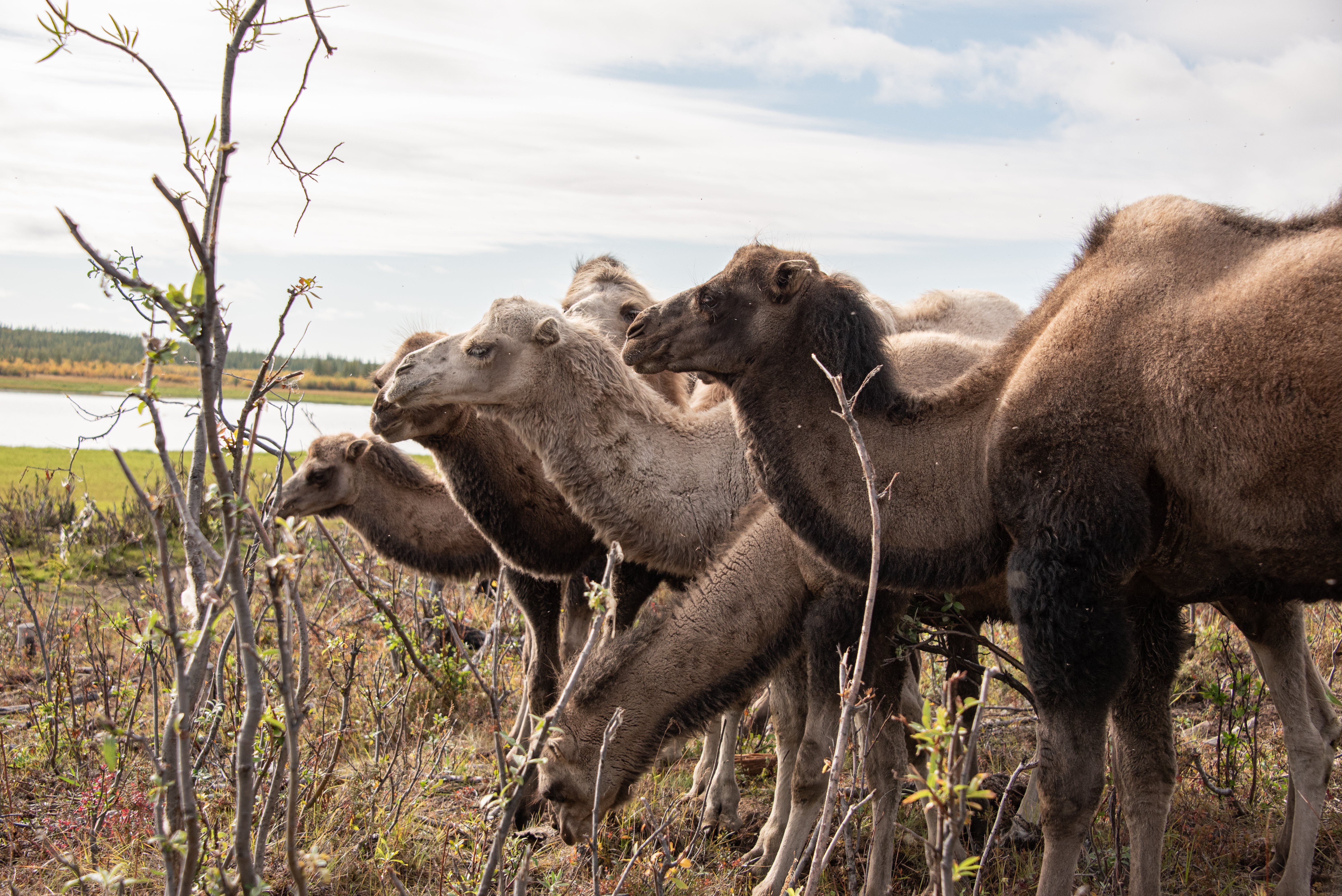Welcome to the world’s most significant rewilding project, which could see the return of the woolly mammoth
In the far northeast of Russia, Evgeny Lebedev finds a bold experiment to restore land to how it was before the advent of civilised man


Your support helps us to tell the story
As your White House correspondent, I ask the tough questions and seek the answers that matter.
Your support enables me to be in the room, pressing for transparency and accountability. Without your contributions, we wouldn't have the resources to challenge those in power.
Your donation makes it possible for us to keep doing this important work, keeping you informed every step of the way to the November election

Andrew Feinberg
White House Correspondent
In the isolated wastes of northeastern Siberia can be witnessed not only the terrifying, deadly reality of climate change, with all its natural force, but also a solution so novel that it delves into the ancient history of this planet before the advent of civilised man.
This is a project that, one day, may see woolly mammoths once again roam the far north as part of an effort to help combat the most modern of all challenges.
The remote location where scientists are working on this most unlikely of solutions is on the bank of the Kolyma River, just outside the small town of Chersky. It is a place where in recent months, the weather has – as in so many other places around the world – gone haywire.
Over the past two years there have been record-shattering heatwaves in the region, resulting in tinderbox conditions as the parched vegetation clings to life.
I had to pass eleven time zones to reach such a spot, deep in the wildest part of the sprawling landmass that is Russia. Flying from Yakutsk into Chersky, I could see thick, grey tendrils of smoke spreading in their own Rorschach test across the sky.
After a short journey by road, I came to a place where the south bank of the Kolyma was ablaze. The vegetation – prime tinder – had been caught by an ill-timed lightning strike.
In Stalin’s time, so inhospitable was the place, it was home to one of the iciest gulags in Soviet Russia
My hosts were on the northern bank. Home to the Northeast Science Station, it is here that scientists Sergei and Nikita Zimov – a father-and-son team – have been perfecting their unique plan to battle climate change.
The station itself juts out over the river, and a huge Soviet-era satellite dish on its roof points towards the surrounding sprawl of mountains, flood plains and boreal forests. Set up by Sergei in 1988, it accommodates his hive of researchers, academics and documentary makers, all here to contribute to his plan for the planet.
No one could call it a pleasant spot. In winter the temperature dips to -55C. In Stalin’s time, so inhospitable was the place, it was home to one of the iciest gulags in Soviet Russia, with those sent there destined for a life working in the nearby gold mines.

Yet what the Zimovs are planning for this area is unquestionably beautiful. For the past 33 years, they and their supporters have been slowly transforming the landscape in an attempt to restore the local ecology to how it was in the Pleistocene epoch, which ended almost 11,700 years ago.
The result is a 62-square-mile area named Pleistocene Park, which they hope will resemble the world as it was before any breath of civilisation.
This visit became especially important to me as it transpired that the project had been approved, more than 30 years ago, by my grandfather, Professor Sokolov, who at the time was head of biology at the Soviet Academy of Sciences. He signed off the article on the theory on which the project is based with the words: “For urgent publication.” This led to the creation of the park within two weeks, and I was going to see the results all these years later.
When I informed Sergei of the connection, he looked grateful. “I owe him till my dying day. People really believed in the value of science in the Soviet Union,” he said, beaming at me.
To help me understand what they are seeking to achieve, the Zimovs first took me deep into a man-made ice cave. Underground, they have built a labyrinth of tunnels and ladders, some 25 metres deep.
As we descended, Nikita took clumps of frozen earth from the surrounding wall, explaining to me how the permafrost can run down for hundreds of metres – and that it spans nearly a quarter of the northern hemisphere. Huge veins of brown ice sat alongside frigid soil, some of it 30,000 years old.
The name “permafrost” suggests permanence, although the reality is anything but, he told me. As it thaws, it flows away in streams or collects in stagnant, bubbling thermokarst pools. This damages everything sitting on top of it, whether roads, houses or schools.

Indeed in Chersky, an apartment block has recently had to be evacuated. It was fighting a losing battle to keep itself upright as the ground hollowed out from under it, forcing its residents from their homes.
Yet the problem of vanishing permafrost poses an even greater challenge than just the damage it inflicts on a local area. Buried within the ground are hundreds of thousands of years’ worth of dead animals and plants, which means huge quantities of potentially harmful emissions.
As this organic matter decomposes, greenhouse gases are released: in particular, the potent warming gas, methane. This helps heat up the planet, and the rate at which it is being emitted only increases with higher global warming, thereby raising temperatures further.
A recent UN environmental report has warned that even if we keep on track with our global 1.5C target, about a third of the Russian permafrost could melt. If it reaches 2C then that number rises to half – and the worst-case scenario for a further rise would be total permafrost collapse.
This was the reason I had travelled all the way here. I had heard that Sergei and Nikita had developed an astonishing solution to help prevent this environmental Armageddon. Their solution was a natural one. Together they were attempting to undertake perhaps the most significant rewilding project on the planet.
For more than 20 years, they have transported musk oxen, bison, horses, reindeer, goats and other herbivores from all over the globe, all animals that once populated the northern steppe. “I want to bring animals back to Siberia,” Nikita said.

Their idea is borne out of a theory honed by decades of research: namely that the flora and fauna of the Pleistocene epoch comprised an ecosystem far more adept at preserving the temperature of the permafrost than the sprawling forests that are found in Siberia today.
In the times of the mammoth steppe, the northern hemisphere was filled with grasslands stretching from present-day Spain right the way through to Canada, across all of Eurasia.
Yet 14,500 years ago, temperatures warmed, rainfall increased, and humans found that they had new hunting plains. They migrated north of Eurasia and into America, hunting animals along the way.
With the animals gone, the pastures could no longer be sustained, and with them went a crucial natural process that had preserved the permafrost for millions of years.
Snow left untouched on the ground creates, paradoxically, an insulating layer, which preserves the soil from bitter winter temperatures. In order to get to the grasses below, the beasts had pawed and trodden on this insulating blanket of snow, compacting it
Snow left untouched on the ground creates, paradoxically, an insulating layer, which preserves the soil from bitter winter temperatures. In order to get to the grasses below, the beasts had pawed and trodden on this insulating blanket of snow, compacting it.
Unwittingly, they were transferring the freezing temperatures of the winter months to the soil, which made it colder. Now, without the snow being compacted, the permafrost would melt at a much faster rate. Sergei and Nikita are working to reverse this. They are already implementing their plan, to see if the theory works.
Their park now has around 150 animals, all chosen for a purpose. Goats are particularly effective at eating weeds; horses can break through thick snow in winter; camels eat the park’s shrub.
And the results so far achieved are a cause for optimism: the soil is sequestering more carbon in places where there are grazing animals. Fewer fetid pools of muddy methane-bubbling sludge are forming.
Even the grasslands themselves are proving better for the environment. The pale grasses are reflecting sunlight, and their deep roots increase soil carbon storage. Overall, the temperature of the permafrost in the area in which they are working is colder by an average of 2.2C.
Nikita took me to Duvanny Yar, the world’s largest permafrost-melt beach, where tantalizing evidence of Pleistocene life is being revealed with every thaw. Scattered along the beach were the bones of animals that had emerged from the permafrost to see the summer sun for the first time in thousands of years.
It took a four-hour boat ride to get there. It took only five minutes of searching before I found my first bone – a reindeer jaw – and another two before I stepped on a chunk of mammoth. “That’s part of a right hip bone,” Nikita said with impressive scientific clarity.
His father, Sergei, told me about a bone count conducted in an average square kilometre of soil in the area. It revealed one woolly mammoth, five bison, eight horses, and 15 reindeer. Alongside these animals were the remnants of rarer breeds, such as moose, and even a woolly rhinoceros, as well as predators such as the cave lions that would have pursued them.
Rewilding in a place like this is not an easy task. To get bison into the region, you must transport them halfway across the planet.
When we arrived, Nikita was waiting on a batch of 12 of them to arrive from Denmark. Their journey – first to Smolensk on the Russian border, then to the Arkhangelsk seaport for a final boat trip to Chersky – sounded drawn-out and probably quite miserable. It was also expensive, costing over $60,000 (nearly £45,000) to transport the creatures.
Yet introducing goats or horses is not the end-plan for the Zimovs. To truly return the land to its Pleistocene state, with all the carbon-capture advantages it brings, their dream is to bring back the very animal that most defined its environment: the woolly mammoth.
These beasts, they explained to me, were the true “engineers” of the permafrost. Their six-tonne weight made them perfect for crushing snow and stomping on saplings, and they also knocked down trees for the fun of it, conveniently clearing the way for grasslands.
For how the Zimovs will achieve this, one has to look across the world. On the east coast of America, at Harvard Medical School, work is being undertaken to recreate the woolly mammoth.
I have been in contact with Professor George Church for much of the last year, fascinated by the audacity of what he is attempting.
A professor of genetics, much of his work has consisted of reading the mammoth genome. But, as more and more journalists kept asking if he “could do more than reading”, he decided to find out if he could.
This week his effort got a welcome boost, with a $15m (almost £11m) investment that garnered headlines around the world. But the work has been going on for far longer than the recent publicity it has attracted might suggest.
What Professor Church does is use a range of gene-editing technologies, many invented by him and his team, to adapt the DNA of an Asian elephant to something more mammoth-like.

There are over a million differences between a mammoth and an Asian elephant, but Professor Church has concluded that he need only prioritise those essential to living in the freezing Arctic. Big ears are made to shrink, shaggy hair begins to grow, and blood becomes cold-adapted.
The primary technique he uses is called “multiplex editing”, where thousands of DNA edits are performed simultaneously, ultimately changing the very building blocks of life. Professor Church thinks he needs to change only 50 to 100 genes in order to engineer a cell that could be used to create the first woolly mammoth embryo.
Unlike normal in-vitro fertilisation, where an egg is fertilised in a lab setting before being placed into a womb, he and his team are creating their own artificial womb, which will incubate his embryonic elephants.
This helps protect the already-endangered existing populations of Asian elephants from having to carry that particular burden, but it also works for scalability.
None of this will happen overnight. The best-case scenario is that we have a reproducing woolly mammoth in around 16 years. That’s four years to work out the method, two years to iron out the flaws, and ten years for the animal to grow to reproductive age.
In collaboration with Sergei and Nikita, with whom he has been in regular communication, Professor Church then hopes to set up thousands of small national parks in Canada, Alaska and Siberia, each with its own population of mammoths. Indeed, Sergei has already set up a second park south of Moscow as the next step in this network.
The challenges they face are huge. To make a significant difference to the environment, Nikita told me that an area of 3 million km sq would need to be covered, much of it expanding the present operation in Russia. According to him, this area of parkland would sequester a billion tonnes of carbon annually, the equivalent of 10 per cent of global carbon emissions.
Convincing the Russian government to transform more than one-sixth of the country’s landmass in the name of scientific research will itself be a vast challenge.
Little wonder that a recent Oxford University study of the Zimovs’ existing operation, while noting its effectiveness, described the task of scaling it up simply as: “mammoth”.
When I asked him about the mid-century deadline that was given, in a recent report by the Intergovernmental Panel on Climate Change, for the world to sharply cut its carbon emissions, and the enormous logistical challenges involved in scaling up his park in time, Nikita said that I was missing the point.
The park is “not just about being practical, it is also a philosophy”, he said. He is just as concerned with raising the question of “how to live sustainably in harmony with nature” as he is about putting it into practice.
The urgency of what the scientists are seeking to do, however, could not be escaped when I looked over to the opposite bank of the Kolyma River, where the wildfire was still raging. It is clear that anyone coming up with radical, imaginative ideas to combat climate change must be celebrated.
What distinguishes humans from other animals is not only a unique capacity for self-destruction, but also the ability to imagine, to plan and to create. Another name, Nikita told me, for Duvanny Yar, with its bones of dead beasts from a long-lost era, is the “animals’ graveyard”. Our own epoch must not end up like the last.
Subscribe to Independent Premium to bookmark this article
Want to bookmark your favourite articles and stories to read or reference later? Start your Independent Premium subscription today.
Join our commenting forum
Join thought-provoking conversations, follow other Independent readers and see their replies
Comments